Naiming Yao
DiffusionTalker: Personalization and Acceleration for Speech-Driven 3D Face Diffuser
Dec 02, 2023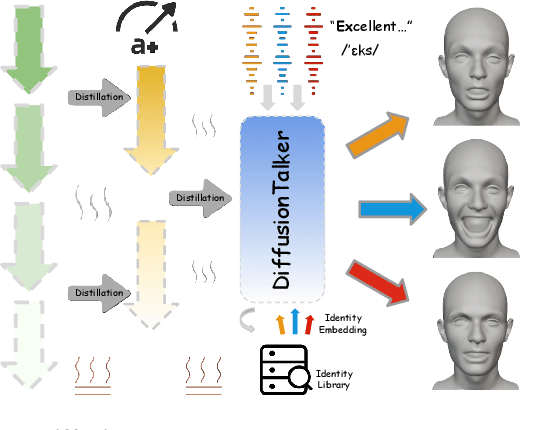
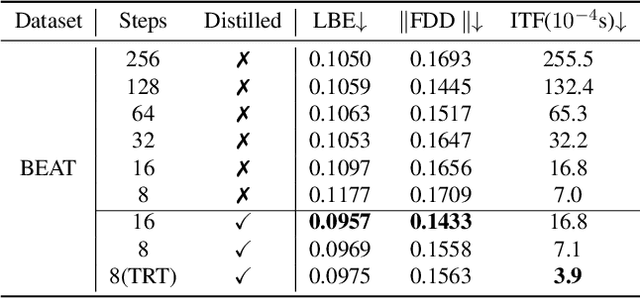
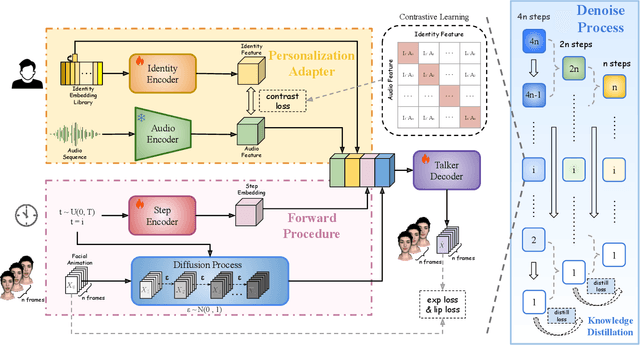

Abstract:Speech-driven 3D facial animation has been an attractive task in both academia and industry. Traditional methods mostly focus on learning a deterministic mapping from speech to animation. Recent approaches start to consider the non-deterministic fact of speech-driven 3D face animation and employ the diffusion model for the task. However, personalizing facial animation and accelerating animation generation are still two major limitations of existing diffusion-based methods. To address the above limitations, we propose DiffusionTalker, a diffusion-based method that utilizes contrastive learning to personalize 3D facial animation and knowledge distillation to accelerate 3D animation generation. Specifically, to enable personalization, we introduce a learnable talking identity to aggregate knowledge in audio sequences. The proposed identity embeddings extract customized facial cues across different people in a contrastive learning manner. During inference, users can obtain personalized facial animation based on input audio, reflecting a specific talking style. With a trained diffusion model with hundreds of steps, we distill it into a lightweight model with 8 steps for acceleration. Extensive experiments are conducted to demonstrate that our method outperforms state-of-the-art methods. The code will be released.
Geometry-Contrastive GAN for Facial Expression Transfer
Oct 22, 2018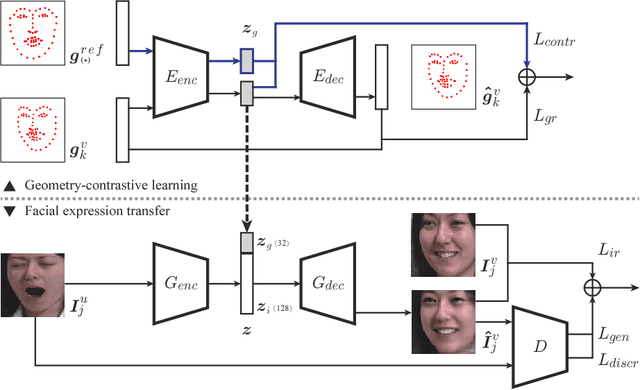

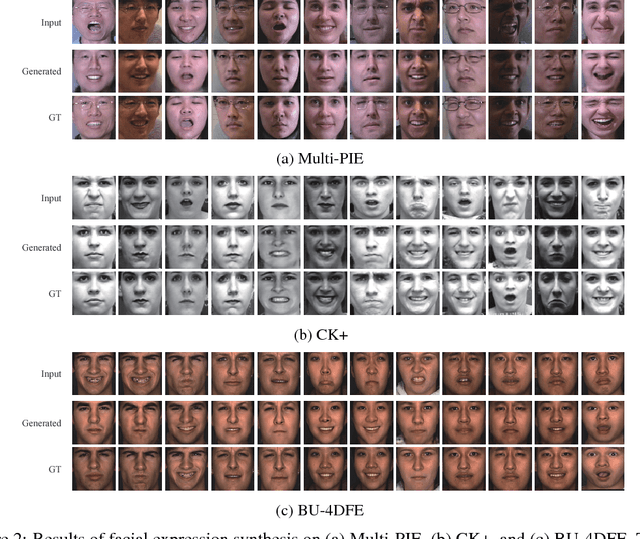

Abstract:In this paper, we propose a Geometry-Contrastive Generative Adversarial Network (GC-GAN) for transferring continuous emotions across different subjects. Given an input face with certain emotion and a target facial expression from another subject, GC-GAN can generate an identity-preserving face with the target expression. Geometry information is introduced into cGANs as continuous conditions to guide the generation of facial expressions. In order to handle the misalignment across different subjects or emotions, contrastive learning is used to transform geometry manifold into an embedded semantic manifold of facial expressions. Therefore, the embedded geometry is injected into the latent space of GANs and control the emotion generation effectively. Experimental results demonstrate that our proposed method can be applied in facial expression transfer even there exist big differences in facial shapes and expressions between different subjects.
 Add to Chrome
Add to Chrome Add to Firefox
Add to Firefox Add to Edge
Add to Edge